Zeta + Adobe: Clean Room Data Onboarding Guide

Zeta supports integration with Adobe Experience Platform (AEP) for secure data activation and audience delivery within the Zeta Marketing Platform (ZMP). This guide walks you through onboarding, setting up Adobe destinations, and enabling cleanroom workflows with Zeta.
Prerequisites
Before beginning the onboarding process, ensure that:
You have access to Adobe Experience Platform (AEP) and the Destination SDK.
API credentials are provisioned through Adobe I/O (API Key, Org ID, Access Token, and Sandbox Name).
A Zeta support ticket is submitted to enable external cleanroom integrations on your account.
Your platform supports one of the following ingestion modes:
Streaming Destinations (REST API endpoint with OAuth 2.0 authentication).
Batch Destinations (S3, Azure Blob, Google Cloud Storage, SFTP, or private landing zones).Clean Room Onboarding Guide_AD
Key Components
1. Destination Server
Defines where profile data is delivered (HTTP API or file-based).
Supports templating of payloads, file formatting, and compression.
Example options: SFTP, S3, Google Cloud, HTTPS.
2. Audience Metadata Templates (Optional)
Automates metadata updates when segments are created, updated, or deleted.
Example webhooks:
createDestination,updateDestination,deleteDestination.Clean Room Onboarding Guide_AD
3. Destination Configuration
Defines UI attributes, authentication scheme, identity namespaces, and data fields.
Supports email, phone, and custom IDs with transformation rules (e.g., SHA256 hashing).
Onboarding Workflow
The Adobe onboarding follows a 3-step process:
Step 1: Create Destination Server
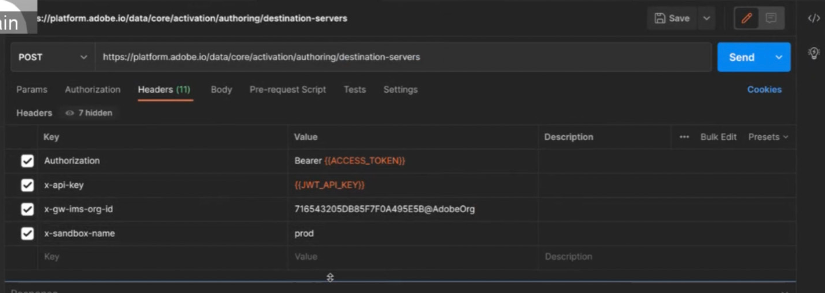
Send a
POSTrequest to/destination-serverswith:Endpoint details (HTTP/SFTP/S3).
File formatting options (CSV, JSON, Parquet).
Authentication headers (Bearer/OAuth).
Response includes a Server ID for later use.
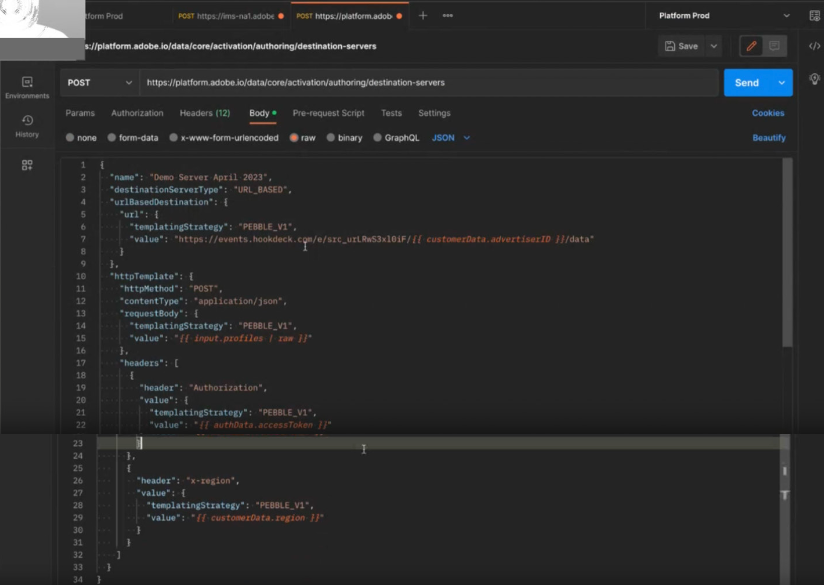

Step 2: Create Audience Template (Optional)
POSTto/audience-templatesto define event webhooks.
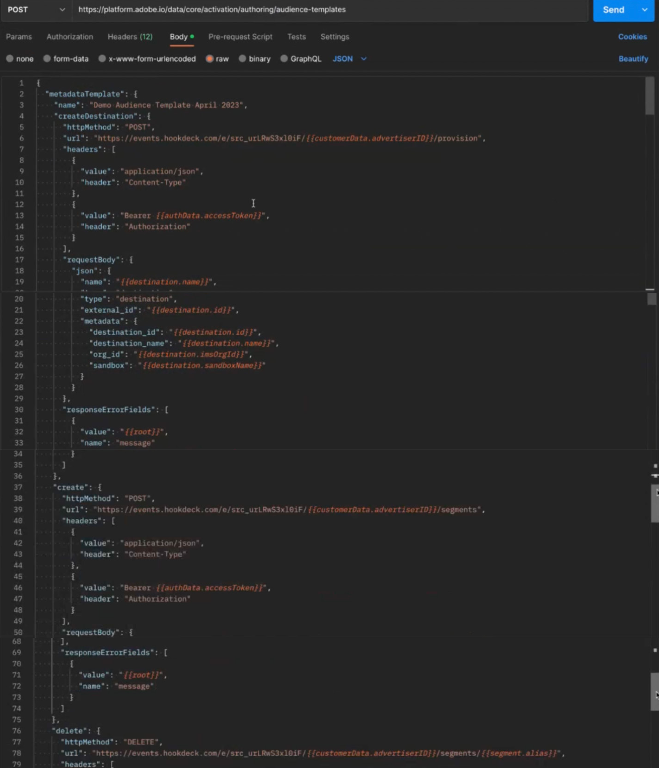
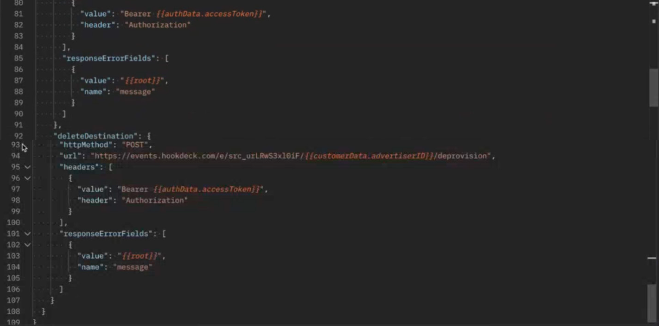
Allows automated handling of audience create, update, or delete events.

Step 3: Create Destination
POSTto/destinationswith:UI attributes and category (e.g., CRM, DSP, DMP).
Customer authentication configurations (OAuth2).
Customer data fields (advertiser ID, region, etc.).
Identity namespace mappings (email, phone, user_id).
Response returns a Destination ID to be used in ZMP.
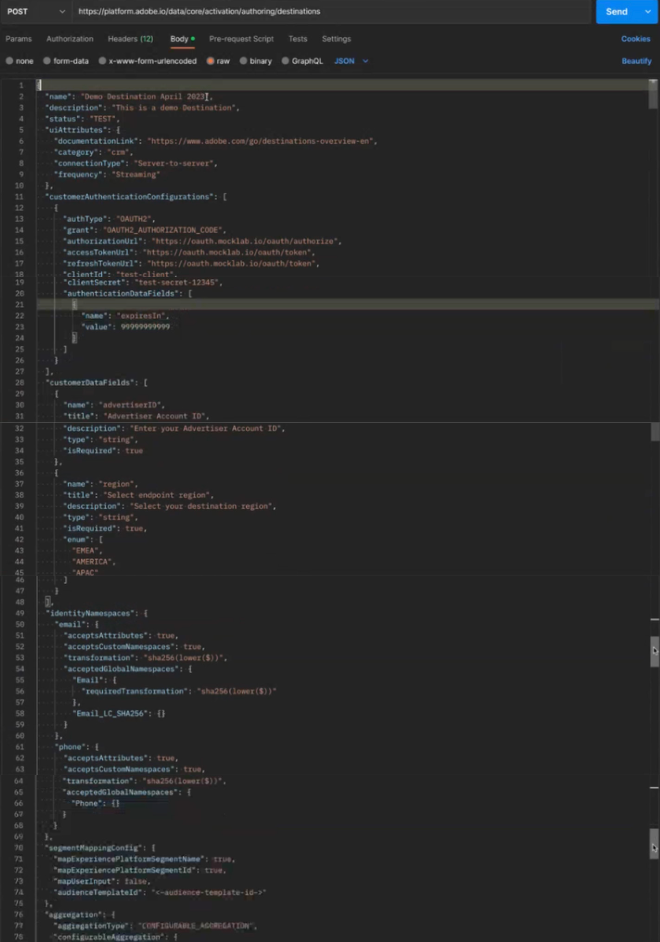
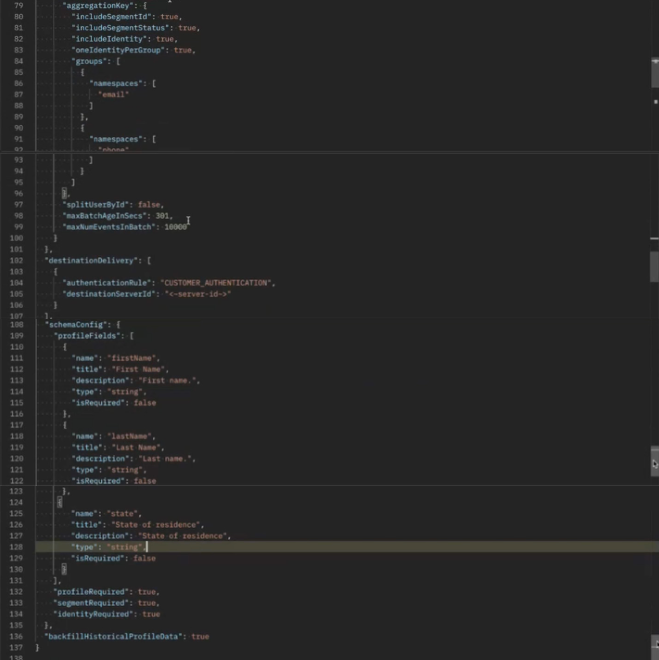
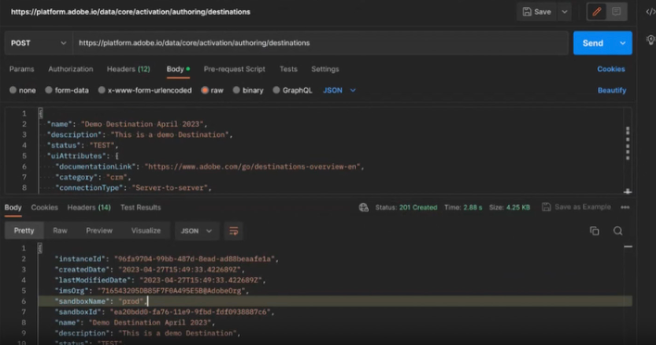
Example Payloads
HTTP Destination Server: Includes partner endpoint, headers, and payload structure.
SFTP Destination Server: Includes file path, CSV delimiters, and compression type.
Destination Object: Includes OAuth2 flow, identity mappings, and audience schema.Clean Room Onboarding Guide_AD
Testing and Validation
Adobe provides Destination Testing Tools to simulate profile deliveries.
Use test payloads to confirm data delivery to your server before production.
Validate segment creation, audience mapping, and encryption where applicable.

Updating a Destination
Use
POSTwith the Destination Object ID to update the configuration.Typical updates:
Refreshing OAuth tokens.
Changing file formats or compression.
Adding new identity namespaces.
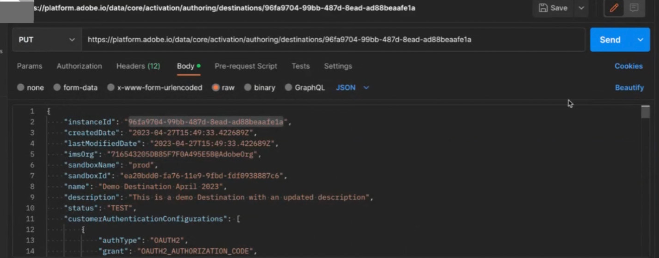
Integration Notes
Processing and enablement typically take 4–6 weeks.
For file-based exports, ensure your ingestion endpoint supports Adobe’s formatting.
Zeta recommends mapping customer_id to ZMP uid during schema transformation to maintain audience consistency.
Alternative workflows:
Pre-create shell segments.
Use user properties (e.g.,
wineInterestSegment=true) for audience automation.
Integration Prerequisites
Before using the SDK:
Ensure your endpoint supports REST or batch ingestion (HTTP/S3/SFTP, etc.).
Obtain Adobe I/O credentials (
API_KEY,ORG_ID,ACCESS_TOKEN,SANDBOX_NAME).Verify sandbox and authentication setup.
Configuration Options in Destination SDK
This section provides details on how different components of the Destination SDK are configured:
Destination Server
Configure server specifics.
Create a message transformation template.
Configure message format.
Define file export configuration.
Destination Configuration
Configure authentication.
Define UI attributes and customer data fields.
Configure schema and audience metadata.
Define supported identifiers and file export options.
Metadata Template
Create and update segments.
Validate configurations and receive notifications for file exports.
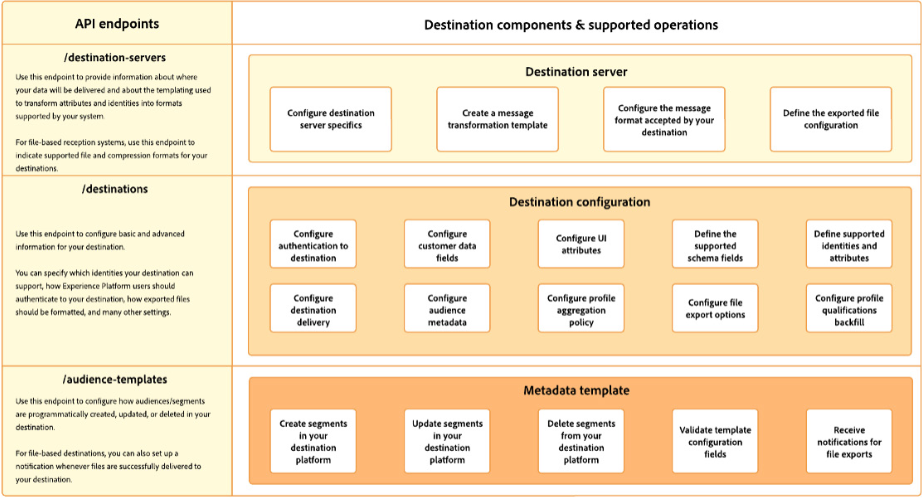
Server Configuration
The destination server configuration links together information about your server specifications and how Adobe delivers payloads to your endpoint.
Key Configuration Elements:
Server specs: Define storage or HTTP endpoint details.
Template specs: Specify how to structure HTTP API requests and transform fields between AEP’s XDM schema and your platform.
Message format: Describe supported templating languages and API call formats.
File specs: Define file formatting and compression (CSV, Parquet, JSON).
Solution Options:
Drop files into users’ folders (mapping client IDs to ZMP uids).
Create shell segments in advance.
Use user properties (e.g.,
wineInterestSegment=true) to automate audience creation.
Once onboarding is complete, Zeta + Adobe cleanroom integration enables secure activation of Zeta audiences within AEP for campaign delivery across CRM, DSP, and other connected platforms.
